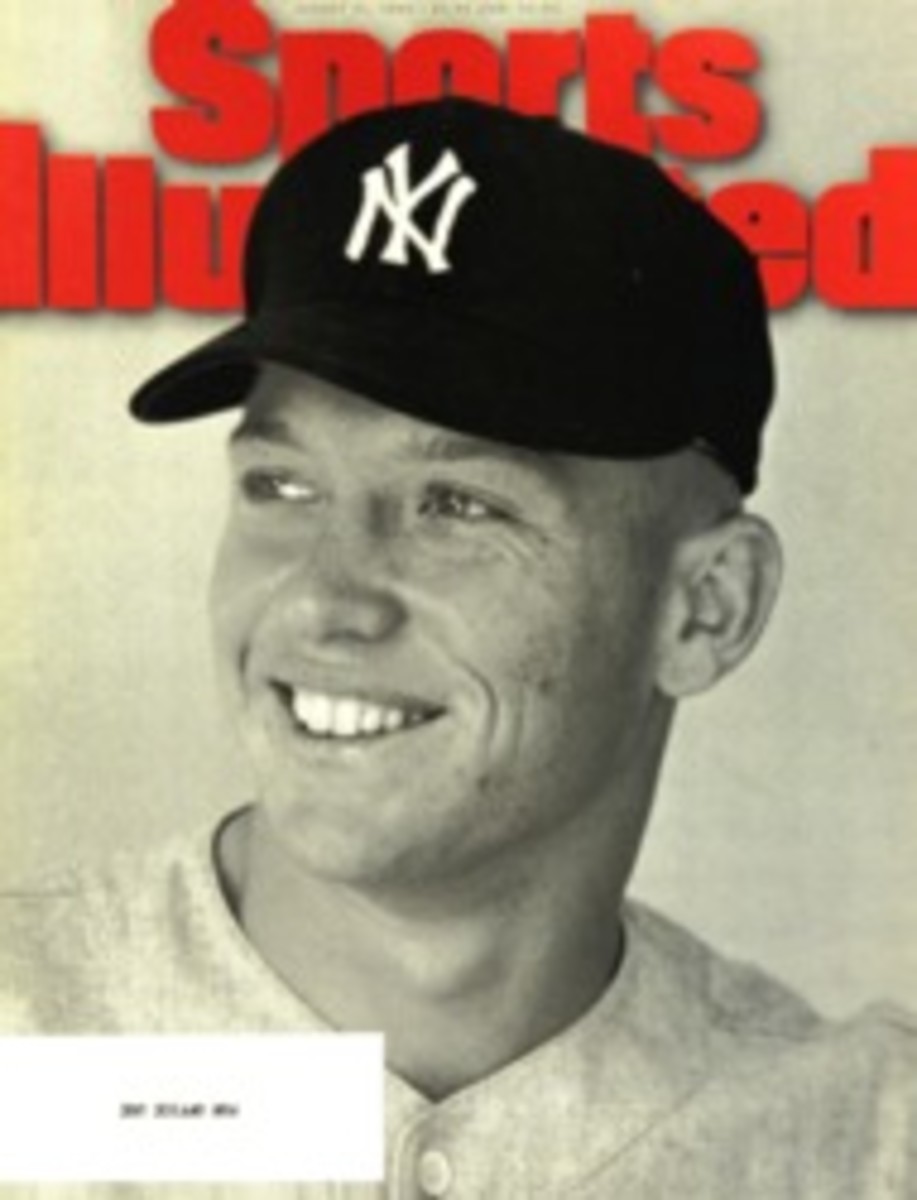
CONQUERING THE SOLAR SYSTEM NEITHER RAIN NOR LACK OF FUNDS KEPT MIT'S CAR FROM WINNING SUNRAYCE 95
On June 17 a solar-powered car built by 20 students at the
Massachusetts Institute of Technology rolled into Indianapolis
Raceway Park, propelled by a tankful of sunshine and an
underdog's resolve.
MIT faced an uphill battle on this day of qualifying for
Sunrayce 95, a biennial intercollegiate derby for sun-powered
cars. Twenty-seven of 38 entries had already been selected for
the nine-day, 1,150-mile race from Indianapolis to Golden,
Colo., but MIT was not among the chosen. For the second time in
five years a panel of judges had been unimpressed by MIT's
written proposal, preventing the school from competing as a
seeded entry.
MIT had one chance left: 11 unseeded teams could earn places by
demonstrating their cars' fitness in obstacle and speed trials.
MIT's crew had gambled on qualifying the hard way. "We had no
idea what we were doing," concedes chemical engineering major
Ivano Gregoratto, a junior who helped build the lightweight
carbon-fiber body of his school's entry.
Unlike the top contenders, MIT had faced the unenviable job of
soliciting support after its proposal was rejected. Led by Goro
Tamai, a graduate student of mechanical engineering, MIT's
campaign raised $75,000--average for most entrants but peanuts
compared with the $1.4 million rumored to be available to the
two-time defending champions from Michigan.
Building a car capable of collecting prodigious quantities of
sunlight and converting that to road speed became the MIT team
members' extracurricular obsession. "Some of us just punted our
classes," admits Gregoratto. Over the course of a year, the team
members built a wing-shaped carapace of solar cells mounted on a
tubular chassis equipped with go-kart brakes, motorcycle shocks
and heavy-duty bicycle-style tires on custom-made wheels. With
Tamai in the low-slung driver's seat, the car weighed a mere 814
pounds. Its flat, cambered profile evoked a ray, so the team
christened the car Manta.
The hard work paid off at the audition. In the fitness
exercises Manta accomplished what no other entry could: On the
first try it passed a proficiency test involving a slalom run,
acceleration and emergency braking. "Right then we pretty much
knew that we had one of the best cars," says Tamai.
But he didn't know how fast Manta really was until that
afternoon, when his crew arrived five minutes late for the road
race to determine starting positions. Making matters worse were
two flat tires, which cost the team 14 more minutes. Despite
these handicaps, Manta completed 115 laps of the 1.9-mile
circuit within the six-hour limit. Only California State
Polytechnic at Pomona outpaced MIT, with 117 laps.
On the morning of June 20, U.S. Energy Secretary Hazel O'Leary
waved the green flag, sending Cal Poly off first. The
Californians maintained their lead to the end of the 65-mile
leg, reaching Terre Haute, Ind., at an average speed of 36.13
mph. MIT finished five seconds later, followed by the team from
Missouri.
Cal Poly held onto first place through the second leg, but on
day 3 MIT snatched a 7:34 advantage by covering the 165 miles
from Louisiana, Mo., to Fulton, Mo., at an average of 42.83 mph.
As the race moved on to Kansas and Colorado, Manta maintained
the lowest cumulative time. "Those days were a total
no-brainer," Tamai says. "The car just drove itself."
In Sunrayce 93 the winner averaged only 27.3 mph. But thanks to
improving technology, this year's fleet traveled some 10 mph
faster. MIT even incurred penalties for breaking the speed
limit. Now reliability rather than speed is the key to the race.
MIT's modest budget might have been the team's greatest asset,
for it encouraged the crew to produce a reliable vehicle without
overreaching. "Not everything in MIT's car looked really good,
but it worked really good," says Brett Gaviglio, Cal Poly's
leader. "We have a saying: Good engineering will always beat out
good money."
In contrast, Michigan arrived with a cutting-edge car sponsored
by IBM and Ford. One hundred fifty students, including
fund-raisers plucked from the business school, contributed to
that team's effort. To everyone's surprise Michigan's reign
sputtered to an end when mechanical troubles forced the
Wolverines to withdraw after the fourth leg. "Michigan had money
to burn," Tamai says, "but money doesn't mean anything if you
don't get the car on the road and beat it up. Testing is the
absolute key."
Where college kids travel, debauchery often follows. Not on this
road trip. Teams had the sober-faced discipline of NASA workers.
They had no choice: As soon as they finished one day's leg, they
had to prepare for the next. Parked on football fields at
community colleges and high schools, some crew members hustled
to unsnap the solar-paneled covers from their chassis and face
them into the waning afternoon sunlight to restore their energy
supply. Meanwhile others scouted the next day's terrain.
Because drivers had to coax their cars up to 55 mph on a meager
two horsepower--the strength of a portable hair dryer--an
unanticipated stoplight or hill could squander hard-won momentum.
Race officials impounded the cars at 9 p.m. to prevent
late-night tinkering. After that, teams met in their support
vans to ponder the next day's conditions. Some schools brought
their own meteorologists, and some downloaded weather photos
from the Internet. "It's like preparing for any sport," says
Scott Grabow, a graduate adviser to the Minnesota team. "But
instead of practicing layups and passes, you run sets of
numbers. It's a brain sport."
Just as the tortoise beat the hare, so the slower solar car
often prevails by conserving energy; the trick is to go as fast
as possible without resorting to the battery, which should be
used only in inclement weather. "It's management," Gaviglio
says. "If you make the wrong choice in the morning, it kills you."
Most teams rose at 5:30 a.m. to resume recharging with the
earliest sunlight. Just before the 10 a.m. start, they would
hoist the photovoltaic canopies back onto their cars. Then the
drivers would scrunch into their cockpits suspended three feet
off the asphalt. "From that low position, the whole road is one
big mirage," says Tamai. "It's like driving into a big lake. You
can't see potholes or pebbles."
The race coincided with the longest days of the year, and
abundant sunshine propelled the convoy across the Midwestern
prairie. But clouds obscured the sun as the cars crossed eastern
Colorado on the penultimate leg, a 171-mile run to the outskirts
of Denver. Driving rain and lightning forced the early finishers
beneath the seats of a high school stadium in Aurora before they
could deploy their solar arrays.
The final day was meant to be a 52-mile sprint to Golden. The
finish line awaited at the U.S. Department of Energy's National
Renewable Energy Laboratory, nestled at the foot of the Rockies.
In sunshine MIT would have had no difficulty preserving its
46-minute lead over Minnesota, but anything could happen in foul
weather. "Nobody knows how much energy MIT has left in its
battery," said Gaviglio, who, with his Cal Poly teammates, stood
third before the leg began. "If they're out of juice, we can
pass them."
The entire pack limped up the rain-drenched road the next
morning, sucking the last ions from depleted batteries. MIT
crept along at 12 mph, its cumulative lead after 1,100 miles
narrowed to 15 minutes.
Then the unthinkable happened: With the finish line just 30
miles away, Manta's electrical system died. "We all freaked
out," said Wandy Sae-Tan, a computer scientist. "We all
started screaming." Infiltrating rainwater had short-circuited
the motor con troller, which regulates the flow of electricity
to the motor. The crew replaced it within 15 minutes, and Manta
rolled on to beat Minnesota by 18:49. Cal Poly finished third,
four minutes behind Minnesota.
The MIT crew had to park its vans and run up the last hill to
find out if its car had won. On seeing Tamai in the winner's
circle, one tired crew member flipped out his cellular phone and
reported the good news to his mother. The team indulged in
abundant, well-earned sleep that night, but for a few glorious
minutes these levelheaded engineers had a hooting, hog-stomping
celebration in the Colorado rain.
"We went from utter despair to elation in 20 minutes" said Mike
Wittig, a senior majoring in mechanical engineering. "There's
nothing finer than this. It's a lot more fun than studying law
or medicine."
This is freelance writer Michael Cannell's second story for
Sports Illustrated.
COLOR PHOTO: WILLIAM R. SALLAZ Its electrical system revitalized, MIT rolled in to beat second-place Minnesota by nearly 19 minutes. [MIT's solar-powered car crossing finish line]
COLOR PHOTO: COURTESY OF NREL Cal Poly driver Kelvin Kido led for two days and then fell off the pace on the Midwestern plains. [Cal Poly's solar-powered car]
COLOR PHOTO: WILLIAM R. SALLAZ [see caption above--Kelvin Kido ]

